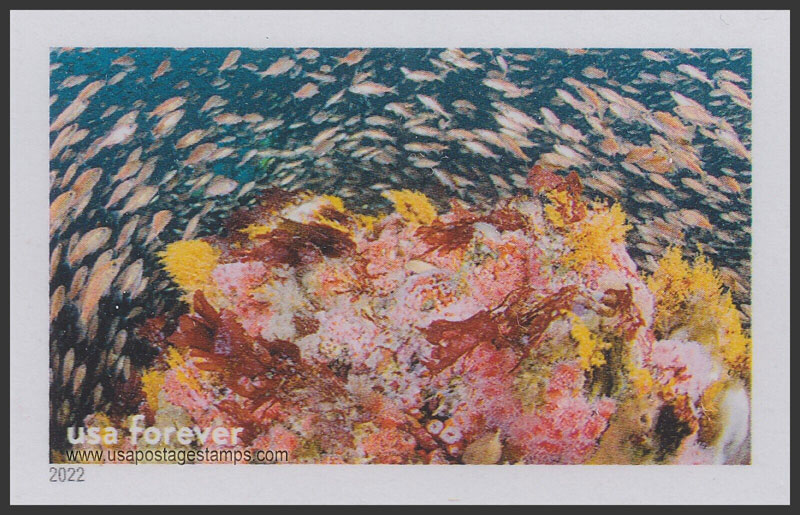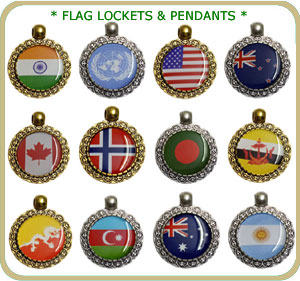US 2022 Young Rockfish Exploring Reef, Cordell Bank Nat Marine Sanctuary, Imperf. 60c. Scott. 5713qk

Series: Marine Sanctuaries of the USA (2022)
Stamp details: Young Rockfish Exploring Reef, Cordell Bank Nat Marine Sanctuary
Issued date: 05-08-2022 (dd/mm/yyyy)
Face value: 60c.
(FOREVER º - No Face Value)
Format: Pane of 16
Emission: Commemorative
First Day City: Santa Cruz, California
Catalogue No:-
Scott (USA): 5713qk ?
Dimensions (height x width):
25mm x 39.75mm
Printer: Ashton Potter (USA) Ltd
Print Method: Offset
Designers: Greg Breeding
Perforation: Imperforate
Stamp Colors: Multicolored
Gum type: Self-Adhesive
Themes: National Park, Coral, Fish, Marine Life, Sea Life
Note: Stamp from imperf. Mini-Sheet.
Face value US$0.60 on day of issue.
Stamp details: Young Rockfish Exploring Reef, Cordell Bank Nat Marine Sanctuary
Issued date: 05-08-2022 (dd/mm/yyyy)
Face value: 60c.
(FOREVER º - No Face Value)
Format: Pane of 16
Emission: Commemorative
First Day City: Santa Cruz, California
Catalogue No:-
Scott (USA): 5713qk ?
Dimensions (height x width):
25mm x 39.75mm
Printer: Ashton Potter (USA) Ltd
Print Method: Offset
Designers: Greg Breeding
Perforation: Imperforate
Stamp Colors: Multicolored
Gum type: Self-Adhesive
Themes: National Park, Coral, Fish, Marine Life, Sea Life
Note: Stamp from imperf. Mini-Sheet.
Face value US$0.60 on day of issue.
Description:- The copper rockfish (Sebastes caurinus), also known as the copper seaperch, is a species of marine ray-finned fish belonging to the subfamily Sebastinae, the rockfishes, part of the family Scorpaenidae. It is found in the eastern Pacific. Copper rockfish are known to be highly variable in coloration, ranging from a dark reddish brown, with pale copper blotching along the sides, to a lighter pinkish brown with a yellowish white mottling on the flanks. At one time it was thought that these variations were two different fish: Sebastes caurinus and Sebastes vexillaris - this is due to the northern and southern populations having different coloration (northern individuals having brown or olive coloration while southern individuals are closer to dull yellow or olive-pink). It is now known however that it is simply one species. Copper rockfish are known to create and communicate with sound produced using the swimbladder and associated muscles; these sounds are used for agonistic behaviors, including territory defense.
Source: en.wikipedia.org/wiki/Copper_rockfish
cultural, archeological, scientific, educational, or aesthetic qualities. While National Marine Sanctuaries are multiple-use areas, the NMSA emphasizes that one of the express purposes of a sanctuary is to “maintain the natural biological communities” and to “protect and, where appropriate, restore and enhance natural habitats, populations, and ecological processes.” The National Marine Sanctuary System consists of 15 marine protected areas that encompass more than 783,000 square miles (2,030,000 km2). Individual areas range from less than 1 to 583,000 square miles (3 to 1,509,963 km2).
Source: en.wikipedNational_Marine_Sanctuary
Source: en.wikipedia.org/wiki/Copper_rockfish
cultural, archeological, scientific, educational, or aesthetic qualities. While National Marine Sanctuaries are multiple-use areas, the NMSA emphasizes that one of the express purposes of a sanctuary is to “maintain the natural biological communities” and to “protect and, where appropriate, restore and enhance natural habitats, populations, and ecological processes.” The National Marine Sanctuary System consists of 15 marine protected areas that encompass more than 783,000 square miles (2,030,000 km2). Individual areas range from less than 1 to 583,000 square miles (3 to 1,509,963 km2).
Source: en.wikipedNational_Marine_Sanctuary




